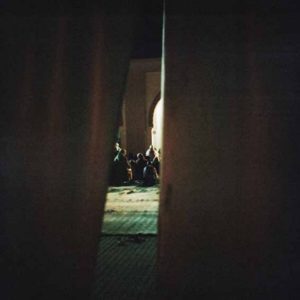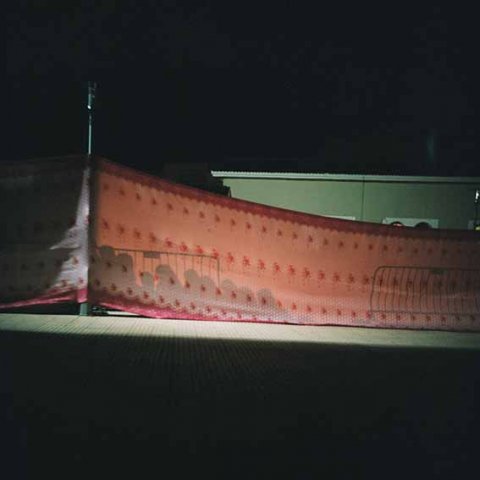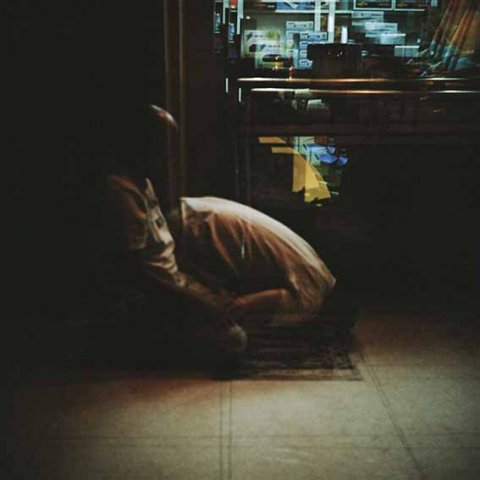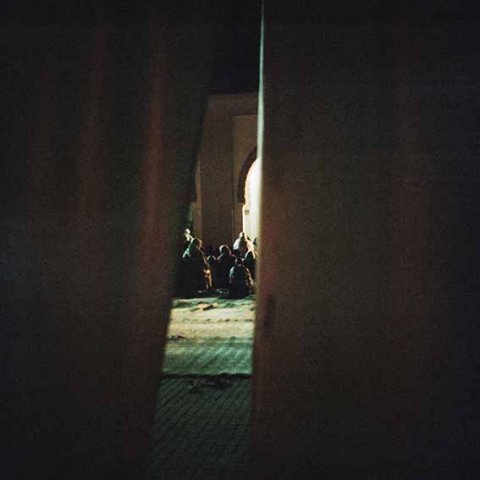
Btihal Remli I INSIDE
(all photos 2014)
The Veil
.
About:
Btihal Remli is a Moroccan photographer. She was born in 1987 in Germany of Moroccan parents. She studied in Germany, Portugal, and graduated with a Master’s degree from the Academy of Fine Arts Vienna, Austria. Since then she has been working on photographic projects.
Her photography is inspired by questions about her identity – exploring spatial, social and religious aspects of her background. Btihal has exhibited her work in Austria, Italy, Hungary, and Germany.

The Veil.
In the exhibition INSIDE, Btihal Remli refers to the unconscious which difines the function of spaces. The borders between secular and sacred space being blurred, and social caracteristics of the intimacy redraw with an anthropological approach.
The artist travels through these spaces as a search for an identity in course. It is a fleeting journey that makes sense. Questions about the presence of religion in public spaces fades public space is both secular and sacred, permanent and ephemeral, belonging to all and can be redefined as many times as there are individuals.
The absence of a human figure in several photographs does not prevent the spectator finding the spiritual aspect created through the different rituals. On the contrary, objects left by humans having equal meanings.

Minds in Mekka.
It transcends time marked by moments that are both usual and repetitive, yet each time is equally important.
Humanity taking her place on the predefined social functions is able to use, adapt and transform it.
Spiritual rituals manifest themselves physically. The immaterial becoming material.
Then, the viewer is both included in this sacred and intimate space but also the place of the voyeur ; the relationship between interior and exterior spaces is also reflected in the eye of the viewer who instead of being in the profane outer space, finds himself propelled into the intimacy.
CG : Btihal, You are born in Germany of moroccan parents and you studied in different european countries.
Many series of photographs you’ve realised are related to Islam and the way muslim approach the rituals. But You have decided to take those photos in Morocco. Why ? Did You want to come back to your origins ?

Mohameds Carpet.
BR: It definately has a connection to my background. I grew up in a muslim family, but at the same time I was always far away from the religion my parents tought me as I went to school in Germany. I had a lot of questions, but we never had lessons about islam only catholic and protestant lessons. The things that I didn’t understand increased. At the same time I still have a big family in the nothern part of Morocco. So I already had one foot in this world. And I think that was also important for the project itself, because the other foot I had in Germany. That allowed me to understand certain things about Islam and Morocco, but at the same time I had the possibility to have a distant view of things. Everything that happened, all the people I had photographed, it wasn’t natural to me.
And yes, I wanted to go back to my origins as well. There was always a part of me who felt like in the wrong spot of the world.
CG : Many pictures have been taken in public places, You show the way it is possible to change a secular place to a sacred one. In your photos, you highlight from those immaterial spaces a mental and symbolic transformation.
How have you approched this appropriation of the space by the rituals of the muslim community ?
BR: I have studied architecture and during my Master’s degree I was focussing more on spatial theory. I was reading Foucault, Lefebvre and Michel de Certeau. In those texts it is always about another space, never about the physical that we know. Michel de Certeau even explains that space is a result of a performance.
At the same time the project started with photographs of Mosques. I was wondering about the difference of a great Mosque and a very small parking space somewhere. Both can be sacred. And this is only possible because of the ritual. Even the great mosque can only be sacred, because of the addition of the ritual. Otherwise it would be only a beautyful and big building.
If we think now of the ritual in combination with the theory of Michel de Certeau I came to the thesis that rituals create spaces. The interesting thing about rituals in islam is that they are repetitive. It means that a space appears several times a day at a specific time !

The Veil 2.
CG : A part of your work is also centered around intimacy. The pictures in different interior spaces but also photos where muslims are praying which seem to have been taken furtively. How did you feel in that intimacy ? Do You think the intimity from those spaces was really different that the intimacy created in the public spaces ?
BR: There was a difference for sure, but the difference was created by me. Sometimes I just couldn’t enter that immaterial space. The ritual is a key to enter them. If you don’t have the key you can’t get inside. But it is not that easy. You can’t just get the key somewhere, you have to follow the rules. Sometimes just at that moment I was not Inside of that space. This is why they look furtive, because they were taken from the outside.
CG : I have noticed, even in your new work “Les héros de la Montagne”, realized in Swizterland, that you are often attracted by architectures, usual places, spaces, but often without human figure. Why ? Do You think your photograph choices’ are related to your architectural studies ? Can you tell me more about this ?
BR : Well I am very interested in spaces and I think that my background in architecture had a big influence. It is a composition of things that create frames. Sometimes I even see the person inside as a part of the composition and not as a human. Completely different than photographers who focus on the person itself. But that is also a reason why typical portraits are rare in my work. At the same time people are quite important. I find very interesting that, because they are flexible, when they move around the space also changes. Also the manipulation of space by people is interesting. In some pictures of my work “Inside” you see fabrics which create a transformation of the space.
